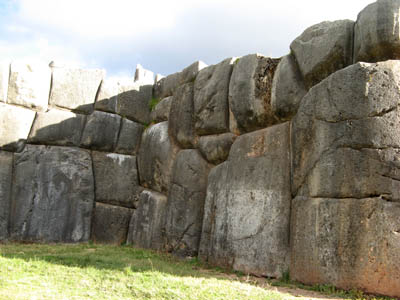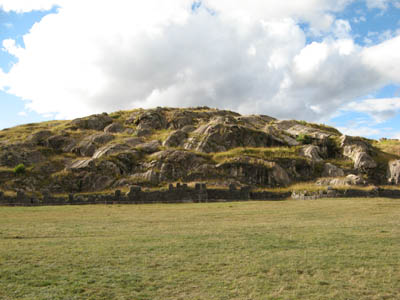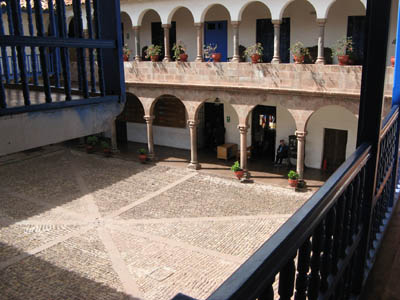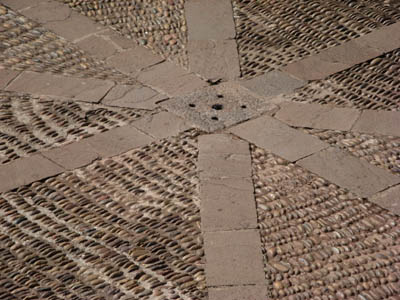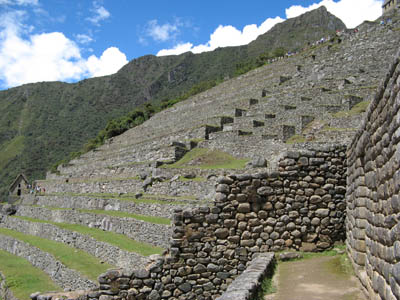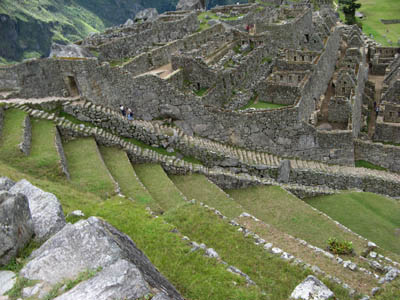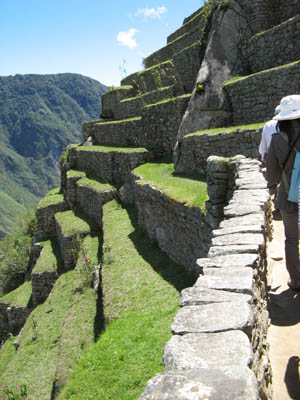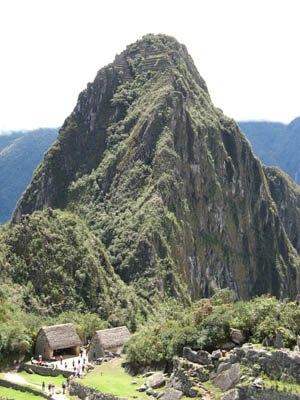Back again – now trying to figure out what to do with this crowded head of mine. All the memories from my trip are very rudely pushing each other around in an effort to be the first ones onto the page. I’ve never been comfortable in a crowd, so just sitting down to this blog has been intimidating. In the end I decided to let them out just one section at at time, and it made sense to start with the rocks, since, well, they’re rocks and I don’t want to make them testy.
[For the one possible non-family reader here, I went to Peru to visit my amazing Godmother (and aunt) Carmen. She’s lived there for 25 years, and although we’ve discussed this visit many times, I just managed to sneak it in before she moves back to the States this spring. Whoo! That was a close one.]
As part of our great Peruvian adventure, Carmen and I flew to Cusco and spent 4 days there. We breathed it in deeply – mainly because if we didn’t we’d get a big altitude headache. But more seriously, we wandered streets that were the foundation of the Incan capital city, took a fantastic city tour, spent a day in Machu Picchu, and saw tons (literally) of truly spectacular rocks. Check these out:
These beauties are from Sacsayhuaman, a site just outside of Cusco – the Spanish called it a ‘fortress’ but its real use is hard to determine. That might have something to do with the fact that the Spanish also took heaps of stone from this site to make their cathedrals in Cusco. Funny how it’s hard to get an accurate read on a place when it’s been mostly destroyed.
Looking at the remaining structures, though, we were awed by the size and precision of the stones – you really cannot slip a paper between many of them. There is no mortar holding these stones together – just precision and placement. Talk about elbow grease!
Our guide, José Angel, pointed out something interesting to us. These incredibly massive rocks were hauled to the site from quite a ways away, when a short distance across a field from the site we couldn’t miss this:
So the obvious question is – why haul mammoth rocks from far away, when they could be quarried right across a field? José explained that we were looking at a huaca – the Quechuan term for a revered natural formation. I’d love to fly back in time and understand what determined the sacredness of one place over another – do some stones just resonate? And what did the landscape look like then?
Here are some cool Cusco walls:
More of that amazing stonework. And you can get a bit of a feeling for the angled walls – part of what makes them immune to earthquakes. Check out the street too – the roads were beautiful. Here’s some of that rock patterning from the courtyard of the Regional History Museum in Cusco:
Now, Machu Picchu is really a place to see rocks. Because it lay hidden for so long, it’s preservation offers a breathtaking window into Quechuan genius. Check out these agricultural terraces:
And retaining walls. (YIKES I’m here to tell you that this would not have been a relaxing detail. It’s a loooooong way down and as you can see, it’s not exactly a gentle slope.)
Wagner, our guide at Machu Picchu, was an engineering student before he worked in tourism, and he really illuminated the science under the beauty of this city. These were some crazy smart people. And boy did they move fast. From what I’ve read, they had a couple hundred years of development in Cusco, but the expansion period – the Inca Empire – was only a bit more than a hundred years in length. They must have been downright persuasive and motivating, as well as brilliant, to build the thousands of miles of roads, the sophisticated farming techniques, the architecture, the aqueducts. Unbelievable.
They certainly weren’t afraid of heights.
Here’s one more rock shot:
Check out the terracing at the top! Kind of makes you wonder what would have happened if the Spanish (and the smallpox) hadn’t arrived.

